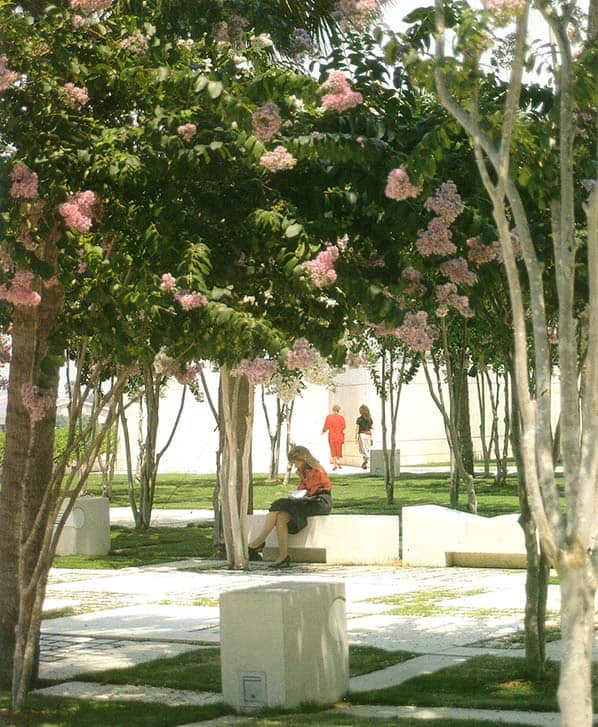
As professional landscape architects, we recognize the achievements of those who came before us, and we celebrate their legacy and contributions to our profession. There are countless influential landscape architects that have shaped the world around us, but very few come close to the significant contributions of Dan Kiley.
Widely recognized as one of his greatest works, Kiley Garden in Tampa, Florida is an excellent example of Kiley’s ability to evoke the feeling of nature in the urban city. It has come to be known as a truly magical garden that is recognized around the world.
Originally constructed in the late-1980’s, Kiley Garden (formerly NationsBank Plaza), is a masterpiece of integrated architecture and landscape design. Following the architect Harry Wolf’s use of the Fibonacci series, Kiley used the famed mathematical sequence to develop the garden’s unique tapestry of planting, paving, water runnels and fountains. However, after only 18 years, poor waterproofing construction resulted the need to remove the garden above while the parking structure below needed repair. While the garden’s paving was restored, only sod was replanted and funding fell short of replanting the Sabal Palms and Crape Myrtles and restoration of the garden’s water features.
Through our work with the Friends of Kiley Garden (a group dedicated to restoring the park to its original beauty), NAK endeavored to restore the garden to its original glory. We volunteered our time to develop a tree restoration plan to combine the original design intent and the current needs of the local community.
The original plan, and NAK’s tree restoration concept plan can be seen below.
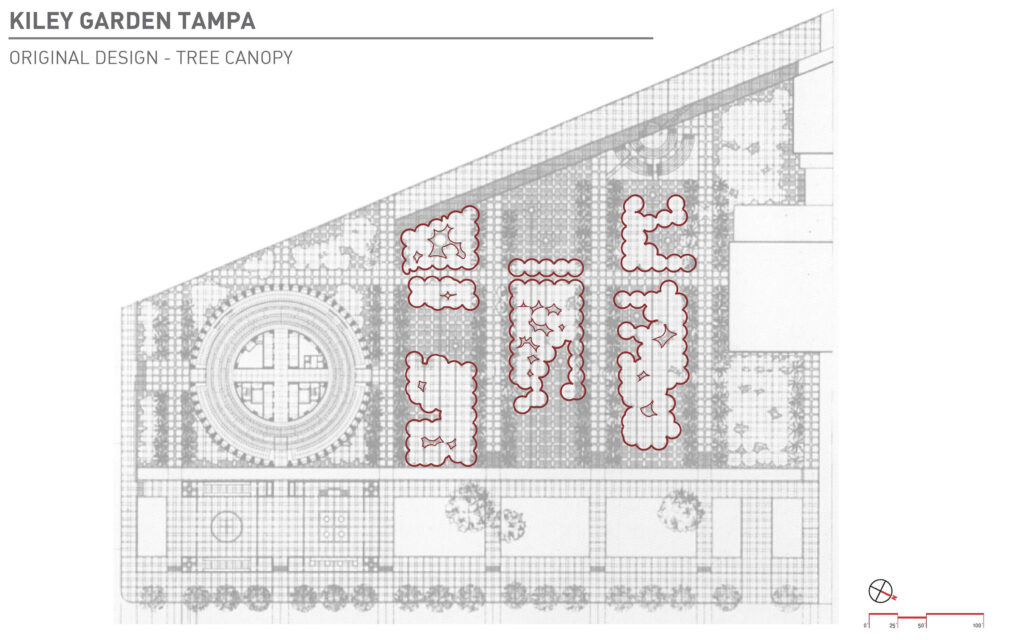
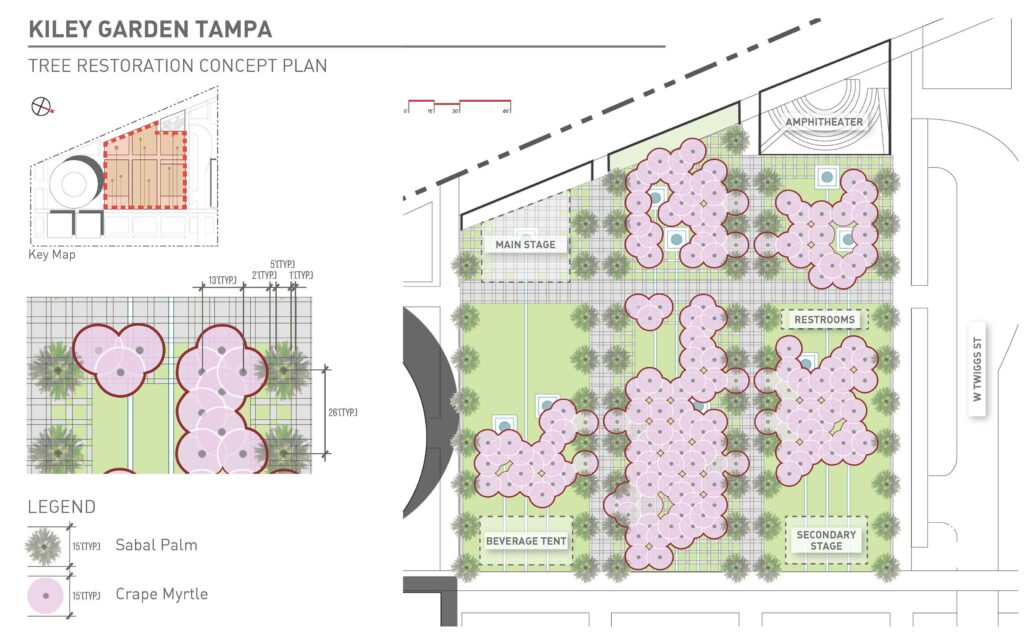
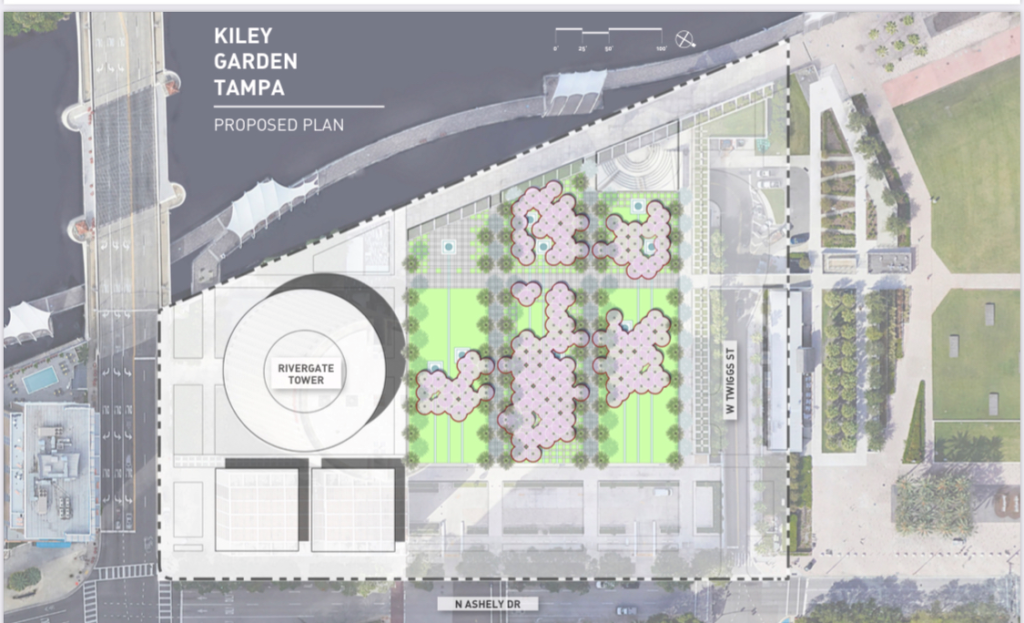
We were also intentional about keeping the original native plant species as an integral part of the park. To us, it was critical to stay true to Kiley’s original design intent in tree species as well as the overall approach of a natural and organic arrangement of Crape Myrtles. However, in order to accommodate competing uses of the park, we developed a creative alternative layout as a way to coexist with other intended uses.
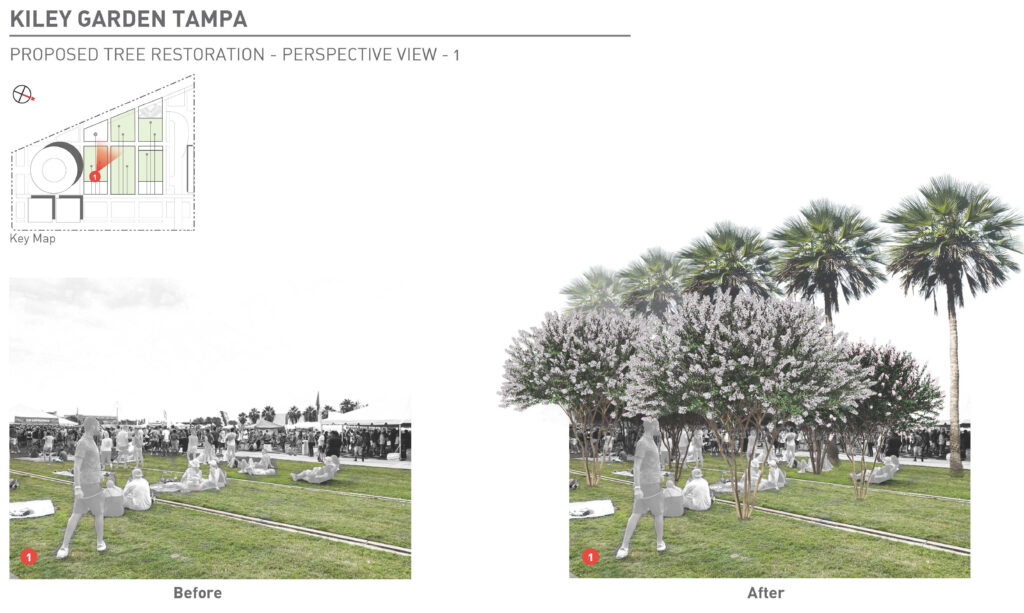
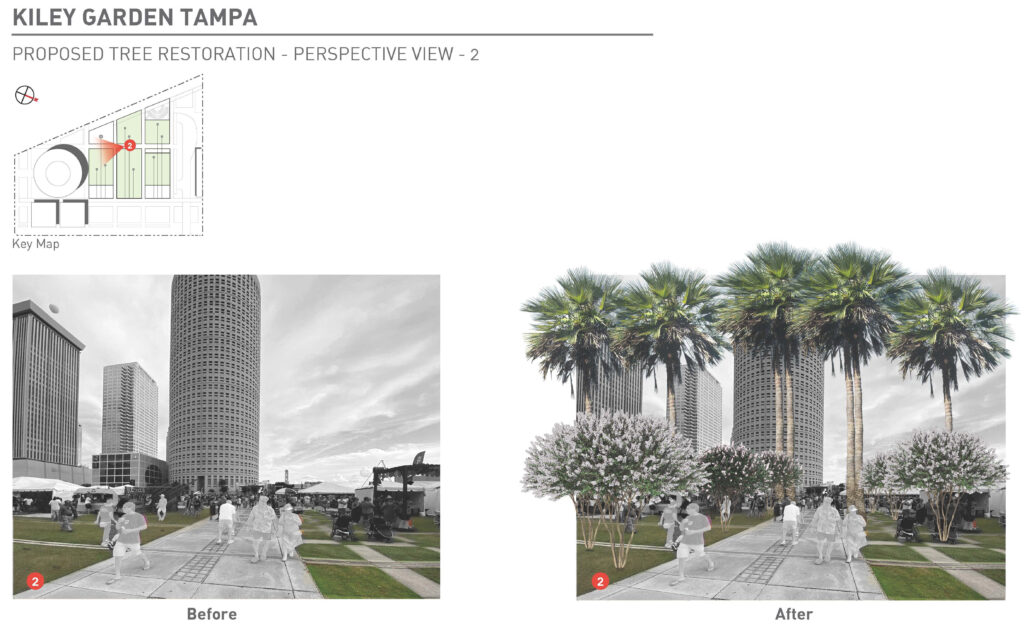
Kiley Garden originally featured 800 Crape Myrtle trees, which have since been removed by the city. We look forward to seeing the return of Crape Myrtles and Sabal Palm trees to the garden once again for the enjoyment of the future generation of Tampa residents and students of landscape architecture, home and abroad.
